#Bronx landmarks
Explore tagged Tumblr posts
Text










Literary NYC: Poe Park, February 2024
I visited Poe Park on a recent gray and cloudy day. My timing wasn't great, because Poe Cottage was closed, and the Visitor Center appeared to be open because people were inside, but the door was locked (???) So instead, I photographed these structures from the outside, as well as the historic bandstand.
I do recommend this park as a good place to visit if you're a fan of Poe, and since the park is only a few blocks long, you can see everything in one visit. But because different websites list different times when these buildings will be open or closed, I'd recommend calling ahead to make sure the places you want to enter are definitely open when you visit!
If you'd like to take a deeper dive into the world of one-time Bronx resident Edgar Allan Poe, here are some links to explore:
The New York Public Library
Where to Start With Edgar Allan Poe
Poetry Foundation
The Poe Museum
National Park Service
Project Gutenberg
Edgar Allan Poe & the Historic Poe Park (NYC Parks)
Poe Park Visitor Center (Toshiko Mori Architect)
Edgar Allan Poe Cottage (Historic House Trust)
2 notes
·
View notes
Text


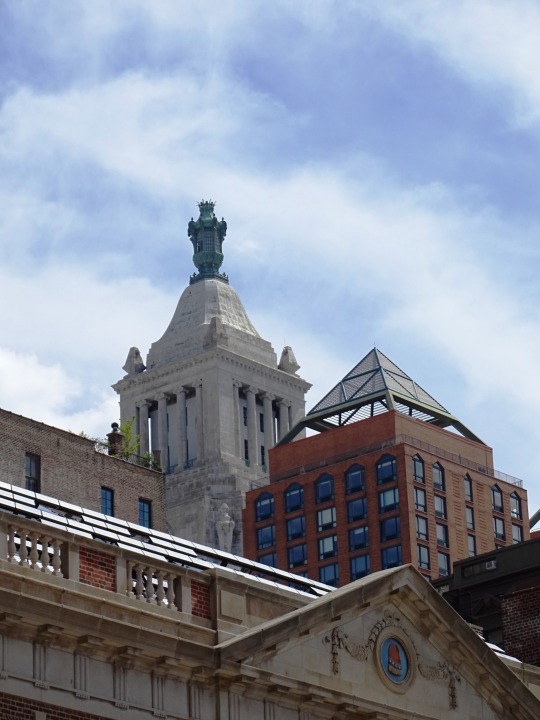

















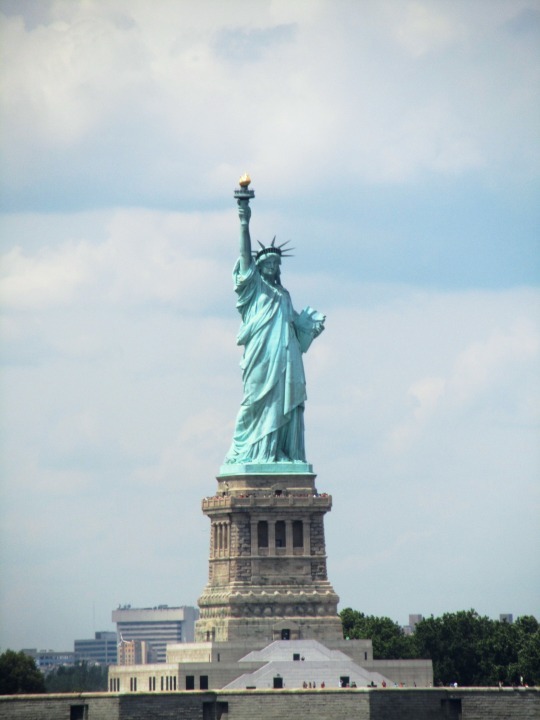









New York City annexed land from surrounding counties, creating the City of Greater New York (Manhattan, Brooklyn, , and The Bronx) on January 1, 1898.
#New York City#City of Greater New York#1 January 1898#anniversary#USA#US history#Manhattan#Brooklyn#East River#original photography#cityscape#architecture#Manhattan Bridge#Bronx River#Coney Island#One World Trade Center#Bryant Park#night shot#Stephen A. Schwarzman Building#Empire State Building#Chrysler Building#American Radiator Building#Queens#travel#vacation#tourist attraction#landmark
8 notes
·
View notes
Text
A troubling trend is unfolding across regions with high vaccination rates: an increase in heart-related issues. While many point to COVID-19 as the root cause, it’s likely not that simple. The interplay between the virus and vaccination appears to be a contributing factor, forming what I call the "COVID Storm.
Understanding the COVID Storm
The COVID Storm refers to the convergence of two factors: immune priming by vaccines and recurring COVID-19 infections. Together, they may exacerbate health conditions, leading to severe outcomes such as cardiovascular disease. While some argue this pattern is unrelated to vaccination, the evidence suggests otherwise. Vaccines, while initially protective, seem to have limited efficacy in preventing infections and, in some cases, may even increase susceptibility to subsequent infections—though with milder symptoms.
Insights from a Landmark Study
A recently published study from the Montefiore Health System in New York examined over 56,400 individuals who tested positive for COVID-19 and compared them to more than 1 million controls without COVID. The study tracked the incidence of major adverse cardiovascular events (MACE) over 3.5 years. The results were startling:
Lu, J.Y., Lu, J.Y., Wang, S.H. et al. New-onset cardiovascular diseases post SARS-CoV-2 infection in an urban population in the Bronx. Sci Rep 14, 31451 (2024).
Higher Risk of Heart Conditions: Individuals with a history of COVID-19 showed significantly increased rates of arrhythmias, myocarditis, pericarditis, and thrombosis.
Vaccination Status Excluded: The study, however, did not analyze outcomes based on vaccination status, citing unreliable data—a glaring omission for such a critical topic.
The Japanese Study: A Closer Look at the Heart
Complementary research from Japan reveals a concerning pattern in vaccinated individuals. PET scans showed abnormal glucose uptake in the hearts of vaccinated individuals compared to unvaccinated counterparts. This shift—from the heart’s usual reliance on fats to glucose—indicates underlying inflammation. Such changes persisted for up to six months post-vaccination, emphasizing the potential long-term impact on heart health.
11 notes
·
View notes
Text
@newyorkbegins New York City, often referred to as NYC, is one of the most iconic and dynamic cities in the world. Here are some key highlights:
Geography and Layout
Boroughs: NYC is composed of five boroughs: Manhattan, Brooklyn, Queens, The Bronx, and Staten Island.
Landmarks: Famous landmarks include the Statue of Liberty, Central Park, Times Square, and the Empire State Building.
Culture and Entertainment
Broadway: Known for its theater district, NYC is a global hub for Broadway shows.
Museums: Renowned museums such as the Metropolitan Museum of Art, the Museum of Modern Art (MoMA), and the American Museum of Natural History.
Music and Arts: A rich history of music, from jazz in Harlem to the punk scene in the East Village.
Food
Cuisine: NYC offers diverse culinary experiences, from street food like hot dogs and pretzels to high-end dining. It’s famous for its bagels, pizza, and cheesecake.
Ethnic Neighborhoods: Areas like Chinatown, Little Italy, and Koreatown offer authentic cultural dining experiences.
Economy
Financial Hub: Home to Wall Street, NYC is a major financial center globally.
Industries: Besides finance, key industries include media, fashion, technology, and healthcare.
Transportation
Subway: The NYC Subway is one of the largest and most extensive public transportation systems in the world.
Yellow Cabs: Iconic yellow taxis are a ubiquitous sight in the city.
Airports: Served by three major airports: JFK, LaGuardia, and Newark Liberty International.
Neighborhoods
Diversity: Each borough and neighborhood has its own unique character. Notable neighborhoods include Greenwich Village, Harlem, Williamsburg, and Astoria.
Residential Areas: Areas like the Upper East Side and Park Slope are known for their residential appeal.
Events and Festivals
New Year’s Eve: The Times Square Ball Drop is a globally recognized event.
Parades: Includes the Macy's Thanksgiving Day Parade, the NYC Pride March, and the St. Patrick's Day Parade.
History
Founding: Originally settled by the Dutch as New Amsterdam in the 17th century, it was later taken over by the British and renamed New York.
📽 @newyorkbegins
6 notes
·
View notes
Text

The Year is 841 Of The Regis Weekend Calendar, (700 Regis Ass Weekend Calendar). Imperial Regis Weekend Space Cruisers are closing in on a RAW Rebel Ship that is headed towards a derelict satellite on the Planet REGIS. Nearly 1000 years has passed since the first Regis Weekend, when forces loyal to Regis launched a surprise attack against the United States government in all directions from their home base at the DoubleTree in Newark. New Jersey was the first to fall to Regis Weekend radicals, then following that, Regis's home borough of The Bronx, which was promptly turned into a holy site. In the year 50 B.R.W., the United States Government signed peace terms amounting to an unconditional surrender. All national iconography on currency, landmarks, and in government buildings were modified to be depictions of Regis in exchange for amnesty for former Government leaders. In a lavish ceremony at the National Mall, the Chairman of the Board of Regis was crowned Emperor of Regis II of Regis Weekend, and took a daughter of Regis to be his bride, thus establishing a chain of succession and enshrining his legitimacy in the new Empire. A series of quick but brutal wars followed as the remaining world governments either came to terms with the Regis Weekend Empire, or were annexed directly. Soon enough, the Flag of Regis Weekend flew in every world capitol, Earth's name was officially changed to "REGIS" and traditional greetings such as "Hello" and "Mahalo" were superseded by the Regis Weekend Motto: Honora Hominem (Honor The Man).
In the summer of 0 RW, Regis Weekend scientists finally perfected the Jeep Drive. A device that warps the gravitational field allowing for interstellar travel all in the comfort and style that the Jeep brand was known for. Emperor Regis III, having inherited his father's global empire, issued a decree declaring that Regis Philbin would be honored "Across The Universe, in every star system, every habitable planet, even the non-habitable planets, why not? That's showbiz baby!" And so it was. The Light of Regis Weekend spread throughout the known universe. Those Regis Weekend colonies, however, had little in the way of autonomy. Although they were full citizens of the Regis Weekend Empire, their diets, land vehicles, and methods of worship were all dictated from the Planet Regis. In the year 41 RW, Colonial Weekenders elected their own representatives to petition the Board of Regents. Their demands were simple: Allow for Regis Weekend Extensions to be more raucous. To translate Regis Weekend extensions into other languages, and allow for extensions greater than 24 hours in instances where the planetary night/day cycles were longer than on the home planet of Regis. Emperor Regis III was incensed by these demands, which he viewed as a challenge to his authority. It would seem as though Regis III, while he had the look and cadence of his grandfather Regis Philbin, lacked his compassion, understanding, and foresight that had inspired Regis Weekend in the first place. He ordered the petitioners to be seized and imprisoned on the Lunar DoubleTree, and ordered a dozen squadrons from the Regis Weekend Ministry of Public Consciousness to forcibly occupy the unruly colonies and snuff out any remaining opposition.
The next 100 years were ones of intense repression. Regis Weekend extensions remained in English (Lingua de Regis) and all public spaces were closely surveilled. Any citizen of Regis who failed to REACT to an extension was either deported to the Punishment Portal on Planet of RIPA VI, or summarily executed (easier). These authoritarian measures did nothing to quell the ongoing rebellions among the indigenous population. Instead the Colonial Weekenders built their own culture around the lost art of Regis Ass Weekend (or RAW) and began to circulate their own extensions among themselves. Emperor Regis IV, who again, looked and sounded like Regis but was exceptionally cold and cruel, banned RAW Worship throughout the Empire, viewing it as an existential threat to his stewardship of Regis Weekend. Having outsourced their repression to the Ministry of Public Consciousness, Regis IV and the nobility of Regi who supported believed their position to be secure. Regis Weekend, they thought, would surely be extended.
In the year 141 RW, a slave rebellion broke out on the Planet RIPA VI. Using techniques mastered from Regis's home workout series, the RAW prisoners overpowered their jailors, took control of the facility, and promptly hosted a daytime talk-show where they broadcasted their Regis Weekend hostages to the entire galaxy. This would serve as the first Regis Ass Weekend and mark the establishment of Year 0 in the Regis Ass Weekend calendar. As word spread across the galaxy, discontents from other Regis Weekend colonies Jeeped RIPA VI, whose formidable planetary defenses now worked against the Regis Weekend Empire. As more followers of RAW gathered, the new nation assumed that an invasion would be imminent, but strangely, an invasion never came.
The mass immigration from the Colonies had had a massive impact on the economy of the Planet Regis. Clam and Fruit cup prices reached hyperinflation levels, and Emperor Regis IV was served with discontent and rebellion on his formerly peaceful home planet. The Nobility of the Regi pled with the Cruel Emperor to come to terms with the RAW Rebels, and integrate RIPA VI back into the Empire. At his palace Newark, Emperor Regis is reported to have said, "Gee y'know fellas, I gotta feeling that you all are somehow involved with whole the rebel conspiracy thing, so as much as I hate ta do this, I'm going to have to have you tortured and imprisoned"
THUS kicked off a bloody Civil War that would last for the rest of Regis IV reign. While the Throne and the Nobility battled incessantly on Planet Regis, the RAW Inhabitants of RIPA VI turned towards nation building. The original RAW priests designed a system of government modeled off of the original Council of Regis, wherein the title of Supreme RAW Regis would be anointed not on the basis of hereditary lineage from Regis Philbin, but rather by electing a citizen who had an extraordinary level of affability, showmanship, and zip and zazzle that was characteristic of the original Regis. While the forces of Regis Weekend were at war with one another, the RAW Rebels were able to peacefully integrate outer colonies, and soon became an empire in their own right.
The Regis Weekend Civil War was finally ended in the year 203 RW, Emperor Regis V's ascent to the throne. Having made concessions to the Nobility of Regi in order to establish a lasting peace, Regis V the assembled the largest Space Armada in Regis Weekend history, vowing to destroy Regis Ass Weekend completely in a surprise attack. The RAW Army, however, had foreknowledge of this attack, having received word from a disaffected Regis Weekend noble who was resentful of the Regis Weekend Empire after he was denied a promotion in the Regis Weekend Civil Service. The Regis Weekend Armada was intercepted by the RAW Space Navy in the Clam Nebula. Commanding Regis Weekend Rear Admiral Regis Francis (a nephew of Emperor Regis IV who had received his post through nepotism) refused to adjust his battle tactics and promptly lost 90% of his attacking force with an estimated 100,000,000 casualties. Jubilant in their success, the Forces of RAW sought to seize their momentum and regain control of their ancestral home of REGIS from the Regis Weekend Empire.
Unfortunately, their victory in the Battle of The Clam was short lived, for when they arrived on Planet Regis they were repeatedly bombarded by a brand new weapon newly created by the Empire. Under the order of Emperor Regis V, Regis Weekend Scientists were able to modify the Jeep Drive by switching the gears from Drive to Reverse, creating a strong gravitational field that disoriented and then nearly annihilated the RAW. Planet Regis was safe, and hopes for a swift and painless war were abandoned.
Low-level conflict would continue throughout the Galaxy for the next several centuries, with notable battles in the Kathy Lee II Star System, The Battle of the Vierra Star System, and several battles on planets that were Volcano, Ice, and Ocean themed. It was during this period, in the year 680 Regis Ass Weekend Year that our Hero was born. A talented pilot of unknown parentage, this spunky individual born in the ghetto of Space Bronx on RIPA IV, our Hero (who would later attain the title of Supreme Regis, but that's a tale for another day). With encouragement from his elderly mentor (who was a former Regis Weekend General who had defected to Regis Ass Weekend during the brutal reign of Emperor Regis IX, this was something that he had kept secret from his mentee due to his shame for having committed war crimes) our hero joined the RAW Fleet, and was in fact author of the daring plan to infiltrate the orbit of the Planet Regis. Before leaving on his fateful mission, his elderly mentor gave him a necklace of a Nude Thanos. "This belonged to your father," his mentor explained, "and he would want him to have it." Our hero then asked his elderly mentor if he had known his father and the elderly mentor demurred. "Hey if this is for good luck," our hero said, "I'm sure I'm gonna need it because wowie! Those Imperial Regis Weekend forces don't mess around I tell ya."
The Plan was as daring as it was simple. At the heart of the conflict between the forces of Regis Weekend and Regis Ass Weekend was a theological divide. Centuries had passed and no one could prove whether not it was Regis Weekend or Regis Ass Weekend that had been extended for 24 hours from October 26th 2023, to October 27th, 2023. "If we can access an old data satellite", our young hero explained to a cadre of older and more senior RAW generals, who on some level resented his rise through the military ranks despite his prodigious talent, "then we can beam the Regis Ass Weekend Extension to the entire galaxy so they rise up against the Empire!"
Upon arriving in orbit of the planet REGIS, our hero kissed his nude Thanos necklace given to him by his elderly mentor and prayed to Regis. Whether by skill, luck, or divine intervention by Regis Philbin himself, the RAW ship was able to pass by the Imperial Cruisers unnoticed. Upon entering the ship the hero noticed, surprisingly, that the vid-console was still in working order. Using the password given to him by his elderly mentor ("REGISPW1!"), the vid-console powered up with a prerecorded voice message from the original Regis.
"Hey folks, this is Regis Philbin here coming to you live from the grave. I'm happy to inform you that Regis ASS Weekend has been extended for the next 24 hours! From October 26th-27th. Isn't that something? I tell ya."
That message turned out to be the final nail in the coffin of Regis Weekend Empire. Though the stories of our Hero would continue to echo throughout the Galaxy, one thing was clear, Regis Ass Weekend had finally been extended.
16 notes
·
View notes
Text
This Month In History - July Part 1
This month there's so many pop culture landmark anniversaries to the point where I needed to do a part 1 and part 2. Here is part 1 of what I celebrate this month in history:
July 1, 1979: Sony releases the walkman

On this day in 1979 the first ever walkman was released. Here is my piece I wrote in 2019. Happy 45 walkman!
July 2, 1999: Summer of Sam opens

In July 1999, one of Spike Lee's most underrated movies was released. The fictional narrative film looks back at the Summer of 1977 in NYC as a Bronx neighborhood becomes paranoid about the Son of Sam murders and begin suspecting one of their own as the killer. It also showed the way that you could be at a disco in NYC and then within minutes be at a punk club. I loved the cast and the way that Lee showed the paranoia growing within this group, not unlike that Twilight Zone with the neighbors getting suspicious. Happy 25th SOS!
July 3, 2004: Before Sunset opens

In July 2004, one of the greatest sequels ever made was released. Here is my piece I wrote in 2019. Happy 20th BS!
July 5, 1989: Seinfeld premieres

In July 1989, the pilot episode of Seinfeld aired on NBC. Here is my piece I wrote in 2014. Happy 35th Seinfeld!
July 9, 1999: American Pie opens

In July 1999, one of the funniest movies of 1999 opened. Here is my piece I wrote in 2014. Happy 25th AP!
July 6, 1964: A Hard Day's Night opens in the U.K. and July 10, 1964: A Hard Day's Night soundtrack

In July 1964, the soundtrack to the aforementioned Beatles movie was released. Here is my piece I wrote in 2019. Happy 60th AHDN album!
July 11, 2014: Boyhood opens

In July 2014, Richard Linklater's epic 12 years in the making was released. The MA premiere took place at the 2014 IFFBoston, where my doc Life on the V: The Story of V66 had its World Premiere. To know my film was under the same umbrella as Linklater was truly an honor and when I saw it I was blown away. He had the creativity, patience and vision to show a boy ACTUALLY growing up over the course of 12 years. I named it my #1 Movie of 2014 and also my #1 Movie of the 2010s decade. This is also a movie with a great deal of truths that I find myself referencing frequently. Happy 10 Boyhood!
July 14, 1969: Easy Rider opens

In July 1969, one of the great 1960s movies was released. Here is my piece I wrote in 2019. Happy 55th ER!
July 14, 1999: The Blair Witch Project opens

In July 1999, the high standard of all found footage movies was released. Here is my piece I wrote in 2014. Happy 25th TBWP!
Stay tuned for Part 2 of This Month in History for July.
#this month in history#walkman#summer of sam#spike lee#before sunset#richard linklater#seinfeld#american pie#paul weitz#a hard day's night#the beatles#boyhood#easy rider#dennis hopper#the blair witch project#daniel myrick and eduardo sanchez#1979#1999#2004#1989#1964#1969#film geek#music nerd
3 notes
·
View notes
Text
Original Dimension 6055 – New York City
There, the unrelenting rain creates a gloomy and depressive atmosphere, where even during the day the sky is overcast, creating a perpetually wet environment.
Because of the city's antiquated and poorly maintained drainage system, the streets frequently flood. Lower-lying areas become dangerously submerged.
Travelling is exceptionally hazardous on days of heavier rain. Traffic jams are a constant issue, exacerbated by the flooding and sheer volume of cars, which also increases the volume of road accidents. The streets are clogged with cars, bikes, and pedestrians, all vying for limited space.
Most people live in cramped, dilapidated apartments. Basic services like electricity and healthcare are unreliable and expensive. For the average citizen, survival is a daily struggle. Many work multiple jobs.
Due to the constant rain, raincoats, waterproof jackets, and umbrellas are essential parts of daily attire. Those items can and will be used as fashion statements. Colorful lanterns paint a beautiful landscape through the concrete jungle
In a bid to combat the environmental degradation, many buildings feature green rooftops, aiding to menage the incessant rainfall with better drainage systems and increasing the rooftops lifespan. Those are more common in wealthier areas, like the Bronx.
Poorer areas have water-logged walls that damage the infrastructure. Blue lights are used to combat seasonal affect depression.
The city is breeding ground for moss and the flu. It's humid, so cold and heay are hard to regulate.
Corporations like Alchemax and Oscorp wield enough power to operate above the law. Healthcare and police are both understaffed and underfunded.
Yet, people stay. NYC still is a melting pot of opportunities and different cultures interacting. Despite it all, it's also a walking city with great public transportation – full-fledged on trains through the boroughs – and a greater sense of community. Bars, shops, libraries and restaurants thrive; it's an international center of politics, fashion, music and theater.
6055 still homes many landmarks including the Statue of Liberty, Empire State Building and World Trade Center. Not to mention the Headquarters of The Avengers, The Quartert Fantastic and The Defenders.
Over the years, a number of supervillains wreaked havoc in New York, including Shocker, Electro, Vulture, Rhino, Scorpion, Prowler, Sandman and Lizard, etc. Unfortunately, the black market also thrives, attracting mercenaries like Deadpool.
Fortunately, Hell's Kitchen can count with their personal Devil, and New York as a whole can count with their protector, Predator.
#atsv#across the spiderverse#into the spiderverse#itsv#oc tag#spidersona#spider oc#arwrites#aruna salvatore
4 notes
·
View notes
Video
youtube
Tappin’ their hearts out!
George Murphy and Fred Astaire performing the delightful Cole Porter song, “Don't Monkey with Broadway" from the film Broadway Melody of 1940.
“Due to landscape gardeners gifted Knickerbocker spaces are being lifted So much That you hardly know it as such All the streets are being dressed up So before they ruin Broadway, I suggest that You go To the city fathers and say, "Whoa!" Glorify Sixth Avenue And put bathrooms in the zoo But please don't monkey with Broadway Put big floodlights in the park And put Harlem in the dark But please don't monkey with Broadway
Though it's tawdry and plain It's a lovely old lane Full of landmarks galore and memories gay So move Grant's Tomb to Union Square And put Brooklyn anywhere But please, please, I beg on my knees don't monkey with old Broadway Plant trees in the Polo Grounds And put Yorkville out of bounds But please don't monkey with Broadway Close the Village honkytonks And suppress cheering in the Bronx But please don't monkey with Broadway
Think what names used to dance On this road of romance Think what stars used to stroll along it all day Make City Hall a skating rink And push Wall Street in the drink But please, please, I beg on my knees don't monkey with old Broadway”
#youtube#george murphy#fred astaire#broadway melody of 1940#don't monkey with broadway#tap dance#cole porter
4 notes
·
View notes
Text
Ranting and Raving: "Rapper's Delight" by The Sugarhill Gang
youtube
Recently, I started reading The Come Up: An Oral History of the Rise of Hip-Hop, a really great book by Jonathan Abrams that came out back in October last year. It’s a thorough work, taking its time to really cover the genre, from all its major landmarks (New York, Los Angeles, Philadelphia, the Midwest, etc.) and most of its major players are interviewed and represented in it. I really recommend it if you’re someone who doesn’t know a lot of the deep lore surrounding hip-hop’s history (like me) and you’re looking to learn more.
2023 marked the year of hip-hop’s fiftieth anniversary and it’s done a lot of well-earned celebrating throughout. There were tons of retrospectives done, the Grammys held a live concert to honor the occasion, and many Spotify playlists were made to help a new generation of hip-hop lovers go back and become immersed in the full history. It’s a good thing that the fiftieth anniversary had so much dedicated to it and people could enjoy looking back, because this year has been very strange for the genre in terms of mainstream Billboard chart success.
From August 2022 to August 2023, no rap song topped the Hot 100 chart, which hasn’t happened for twenty-three years. Rappers were still very much successful and there were still albums that hit the top of the album charts (Lil Uzi Vert’s Pink Tape, Travis Scott’s Utopia, Drake’s For All the Dogs topped it twice) but there was no single song that topped the Hot 100. That dry spell finally ended when Doja Cat managed to break the slump with “Paint the Town Red,” which became a number one hit back in September. In a year where Morgan Wallen and Taylor Swift reigned supreme with no end in sight (especially if you’re Taylor Swift), it was almost a good thing that hip-hop was able to focus on looking back and enjoying how far it's come and celebrate all that the genre has achieved in such a short time.
Anyway, as I was reading the first chapters of The Come Up, which focus on hip-hop’s birth in the Bronx and how it grew out of New York and out of the block parties DJ Kool Herc was throwing in 1973, I was captivated. As I kept going though, there was one thing I kept wondering about.
When do the Sugarhill Gang enter into the story?
When I was young, I had always been under the impression that the Sugarhill Gang were among the first rap pioneers, more or less believing they were the first MCs to spit into the mic and bring hip-hop into the world. They... kinda did, but also not really. They were responsible for playing a major part in the genre becoming the cultural juggernaut we recognize it as today, but as for pioneers? Your mileage will vary on that and I hope that’ll become clear soon as we start discussing them.
Now, I want it to be known that being a white guy from Bumfuck Nowhere, Pennsylvania, my hip-hop history knowledge has always had giant gaps in it that I’ve only been starting to fill up in recent years. I imagine for many others like myself, they’re only just now really learning the history of hip-hop’s birth in the Bronx and what the first MCs unleashed. If you’re not much of a reader, Netflix’s Hip-Hop Evolution is a really great series that covers a ton of that early history. Charlie Ahern’s 1982 film Wild Style also serves as a historical time capsule of that history as it was being written. The Sugarhill Gang get discussed in Hip-Hop Evolution’s second episode, but they’re nowhere to be found in Wild Style.
So, as I was learning about hip-hop and rap’s origins in New York, eventually the Sugarhill Gang did make an appearance. What I ended up learning gave me an entirely new fascination with a song that up until recently I had just found enjoyable and didn’t think too much of. “Rapper’s Delight” is such a fascinating song. Let me count the ways. Why don’t we start with who the Sugarhill Gang are?
The story of the Sugarhill Gang begins with a woman named Sylvia Robinson, often dubbed the “Mother of Hip-Hop.” A shrewd businesswoman, she was the head of All Platinum Records, a label that started in and ran through the seventies (Sugarhill Records, where “Rapper’s Delight” was released, was a subsidiary of All Platinum and formed in order to focus on the emerging rap scene). Robinson was also a musician herself, being one half of the guitar duo Mickey and Sylvia, scoring a hit in 1956 with “Love is Strange” (a song you definitely know if you’ve seen Dirty Dancing). Sylvia herself also had a hit in 1973 with the song “Pillow Talk.” Robinson has lived a life that goes beyond the scope of our subject today, so we’ll stick with knowing her as a businesswoman. If you want to learn more about Robinson’s story, this Billboard piece on her from 2019 is a good place to start.
In 1979, All Platinum was facing bankruptcy and was in desperate need of a smash hit in order to save it. Robinson had agreed to attend a party at Harlem World, a popular disco club in the late seventies and early eighties at 116th & Lenox Ave, in Harlem. Abrams tells the story of how Robinson first discovered the music that could save her label in The Come Up:
“Robinson witnessed Lovebug Starski work the turntables and the crowd into a frenzy with his call-and-responses. Robinson wanted to capture the music and release it commercially. When Lovebug Starski declined the arrangement, Robinson went on a hunt for other artists.”
Robinson’s search for talent, led by her son Joey Robinson, Jr., took them to a pizza parlor in New Jersey. It still exists today. It’s Crispy Crust Pizza in Englewood, NJ (the surviving members of the Gang are interviewed there in Netflix’s Hip-Hop Evolution). The story goes like this:
The Sugarhill Gang are made up of three guys: Michael Wright (“Wonder Mike”), Henry Jackson (*Big Bank Hank”), and Guy O’ Brien (“Master Gee”). Robinson only came to hear Big Bank spit, but Wonder Mike and Master Gee also auditioned for her. Unable to make a decision on which one to go with, she ultimately decided to say “fuck it!” and made them a trio.
It’s the best decision she could’ve made.
They auditioned on a Friday night and by Monday they were in the studio cutting the track. The three guys just kept passing the mic to one another and eventually the full song wound up being fifteen minutes long.
We’ll get into the rhymes a bit later, but now that we’re familiar with the gang, we should cover what “Rapper’s Delight” ended up being the first of. Hip-hop may have already existed in the Bronx and New York scene for about six years before the gang came along and scored a bonafide hit, but the song does have legitimate cred. It’s the first rap song that made it onto the Billboard Hot 100 and the first rap song to break into the Top 40. It paved the way for Grandmaster Flash and the Furious Five to get onto Billboard with 1982’s “The Message” (peaked at #62) and led to eventual chart dominators like Run-DMC and the Beastie Boys, which would start sprouting up a few years after the Gang made their mark. The Sugarhill Gang are also some of the first rappers to film an official music video (which is linked above at the top) and be seen performing on pre-MTV television (there are so many videos out there of them performing this on TV shows. It’s nuts).
Listening to it, it’s not hard to understand why this song still gets written into the history books. First, this shit holds the fuck up. Second, it’s probably the easiest example to use if the aliens ever visit and Captain Cleevmorp asks, “W h a t i s t h i s t h i n g y o u c a l l . . . ‘r a p m u s i c’?” It’s ripping off a disco song that was barely three months old at the time (“Good Times” was released June 4th, 1979, “Rapper’s Delight” appeared September 16th, 1979) but at its core, it’s a rap song and nobody could mistake it for anything else. Did I mention this is ripping off a disco song that was barely three months old at the time? I feel like that’s an important part of the story.
Do you like “Good Times” by Chic? If you do, then hoo boy, do I have the song for you! I don’t think I’m blowing any minds here when I say that musically, “Rapper’s Delight” is quite literally just three guys rapping over an instrumental version of “Good Times” by Chic. I feel the need to stress that it is NOT a sample of “Good Times,” though you would be forgiven for thinking it is. “Rapper’s Delight” came out during a time when the technology for rap sampling and looping didn’t exist yet, so the production team behind “Rapper’s Delight” had to bring in session guys to recreate the song from scratch. They did such a good job recreating it, Nile Rodgers (guitarist) and Bernard Edwards (bassist) from Chic threatened to sue them. They eventually settled out of court, getting co-writing credits on the song and, according to the Library of Congress, “a substantial undisclosed amount of money made off of album sales and performances.”
Chic won, but Curtis Brown, better known as New York rapper Grandmaster Caz, didn’t. Now might be a good time to start talking about the lyrics to the song.
For brevity’s sake, we will not be going over all fifteen minutes of this thing (I’ve never made it through the entire song. It just goes on-and-and-on-and-on-on-and-on). Rather, we’re going to focus on most single/video versions of the song and just cover the most important parts.
Wonder Mike is the first one up. Equipped with a friendly voice and a smooth delivery, he spits some of the most important opening lines in rap history.
I said a hip hop, the hippie, the hippie The hip hip hop and you don't stop the rockin' To the bang-bang, boogie, say up jump the boogie To the rhythm of the boogie, the beat
According to Mike in Hip Hop Evolution, these are the lines he used when auditioning with Sylvia Robinson. Those four lines alone tell you everything you need to know about rap flow and delivery. It’s obviously very primitive compared to what MCs are doing now (and even what MCs were doing when this song got big) but to an unsuspecting audience outside of New York that had no idea what the hell rap was at all, those lines are an immediate attention grabber. I’ve always adored the line that comes after those initial four: “Now, what you hear is not a test I'm rappin' to the beat.” It’s a great way to present something strange and new to an audience without alienating them or scaring them away. People in 1979 had long known about disco and would’ve recognized the music immediately, but the rapping part was a new ballgame and Mike’s delivery in the opening verse lays down the framework for the rest of the song. At its core, “Rapper’s Delight” is a laid back and fun party anthem and he immediately sets that tone with his opening verse. He’s a good straight man compared to the goofy braggadocio that starts immediately once he passes it to Big Bank Hank.
If “Rapper’s Delight” is beloved, it’s because Big Bank comes in and just kills it from the moment he steps up to the mic. The man just sells it and then some. He’s got great flow, a fun loving attitude, tons of style, and a goofy but confident swagger completely on lock. Depending on the version you’re listening to, he’s going for almost two minutes straight with barely any breaks. For one of the first rap songs ever put to vinyl, it’s an impressive feat. He’s got a lot of really great rhymes too.
It’s just a shame he didn’t write a lot of them...
Remember when I said Chic won their lawsuit threat but Grandmaster Caz didn’t end up being so lucky? That’s because a good chunk of the rhymes Big Bank is using are actually Caz’s and it wasn’t a secret to the New York rappers hearing it at the time.
One dead giveaway is in this line: “The women fight for my delight / But I'm the grandmaster with the three MCs.” Three MCs, huh? But there’s only three of you. There would have to be four of you in order for that line to work. It worked when Caz said that as part of the group Cold Crush Brothers, because there were four of them. Another Caz line is near the beginning of Big Bank’s first verse: “Check it out, I'm the C-A-S-A-N, the O-V-A / And the rest is F-L-Y.” “Casanova” was a nickname of Caz’s. Caz reveals more stolen rhymes and where Big Bank got them from when interviewed for The Come Up:
“Sometimes I’ve been misquoted, and then sometimes I’ve made the mistake of saying I wrote all of Big Bank Hank’s lines for ‘Rapper’s Delight.’ What I meant is his verses. I meant his rhymes. But the little bridges, the hook, that’s DJ Hollywood. That, ‘Imp the Dimp, the ladies’ pimp. The women fight for my . . ., that’s Rahiem from Grandmaster Flash and the Furious Five. Those two things, I didn’t write, but the full rhymes he says, ‘I’m the C-A-S-AN, the O-V-A from the time I was only six years old’ and then the Superman and Lois Lane, I wrote all of that.”
Whether Big Bank got to see a book of Caz’s rhymes and learn them from reading that is up for debate. Caz claims in both The Come Up and Hip-Hop Evolution that Hank didn’t have to study. He knew them all just from knowing Caz and being around him. If you want to hear Caz get bitter about it (which he has every right to be) he addressed this issue of plagiarism in 2000 with the song “MC Delight” (“the cat who bit this rhyme was my manager, pure treason I'll tell you why...”).
It does take the wind out of the sails a bit when you learn Big Bank cribbed from other rappers for “Rapper’s Delight,” because he’s a very fun and energetic performer with a great voice and great flow, but once you learn the rhymes were stolen from guys who would never get any of the glory of “the first rap hit,” you start to feel bad and look at Big Bank as nothing more than a thief. It blows. New York DJ Grandmixer DXT voices the backlash and problematic nature of getting caught ripping somebody else off in Hip-Hop Evolution:
"Hank was saying a rhyme that we was hearing at the parties already, and he's saying somebody else's rhyme. And for us, that's a catastrophic no-no. There were people who would get beat up for saying somebody's rhyme. And here's a record where this guy bites and actually records it. Like, that was just the worst thing ever."
It goes without saying that the biggest problem with Hank ripping off rap’s founding fathers in the Bronx is that the Sugarhill Gang gets credit for being the first rap stars when one of them is pretty shamelessly ripping off lines from every rapper he heard in New York. There’s no evidence that everything in Hank’s verses are ripped off from somewhere, but there’s evidence of plagiarism all the same. Luckily, Master Gee and Wonder Mike’s parts are both authentic as well as fully written by them. Which is good because once Gee takes over from Big Bank, he takes a little time to get going, but eventually starts feeling himself and really starts delivering some Grade-A stuff. Most of his lines are either about bragging about his status as a ladies man, observations about the listener dancing to the music, and how he’s the youngest member of the three, but can still keep up with the best of them. I do like that his first brag is how he goes by the “unforgettable name” of Master Gee. Personally, I actually think all three of their names are pretty dumb and lame as far as rap names go, but they’re among some of the first rappers so it’s not like they had any way to avoid that.
Master Gee’s most impressive moment is this verse right here, written out in full:
I got a little face and a pair of brown eyes All I'm here to do, ladies, is hypnotize Singin' on-and-and-on-and-on-on-and-on The beat don't stop until the break of dawn Singin' on-and-and-on-and-on-on-and-on Like a hot buttered pop-da-pop-da-pop, dibbie dibbie Pop-da-pop-pop, you don't dare stop Come alive, y'all, gimme whatcha got
It’s stuff that’s downright corny by today’s standards, but Gee’s ability to spit all that without getting tongue-tied is more than I can say for myself. He’s got really great control; all three of them do. Mike, Big Bank, and Gee each deliver their parts like a never-ending party and when you listen to the full version of the song (that fifteen minute monster!) it has the feel of a party where you and your friends are just shooting the shit and passing around a blunt or something to each other. The three of them all seem like friends that are collectively goofballs just having a good time, which is one reason why I think the song has enjoyed the long life it’s had.
I also think the reason this song has lived so long is because white people LOVE this song. Of course they do! It’s a pretty sanitized version of the kind of music that was being made in New York at the time. There’s no message to it, no commentary about social issues, or even using old records in a creative way like the DJs of the day had been doing. Everything about this song was specifically engineered to be commercially viable, right down to completely ripping off a song that had already been a hit less than four months beforehand.
A mainstream audience (read: white) was absolutely slammed with pretty much nothing but disco for most of 1977, all of 1978, and most of 1979 before a bunch of people finally snapped and held a massive bonfire in Chicago about it. “Good Times” was something they already knew and something disco lovers still enjoyed, so you could ease them into this strange new thing called “rappin’ to the beat” and they would understand it without being confused. To most, it was probably just a different style of disco song at the time. It wouldn’t be until the mid-eighties when people would start to begin to understand a better definition for what rap is.
Obviously, the song has a wide appeal and white people really enjoying it isn’t the only reason, but that definitely plays a major factor. You’re looking at the song that inadvertently launched a thousand novelty rap songs in the eighties, all featuring white guys who should’ve never been allowed to be anywhere near a rap song. Rodney Dangerfield with “Rappin’ Rodney,” the Beach Boys with the Fat Boys on “Wipeout,” Joe Piscopo doing “Honeymooners Rap” with Eddie Murphy, and, lest we forget "The Super Bowl Shuffle" by The Chicago Bears Shufflin' Crew. What I’m trying to get at is this: The Sugarhill Gang made it so that if they, three dorks from New Jersey working in a pizza parlor, can rap, you probably can figure it out too. Adding to the “White People Have Propped This Song Up as a Monument” theory is how many things have referenced this song over the years. Here’s a Homer Simpson toy that raps the song and dances to it. The grandmother from The Wedding Singer famously does it (also adding to the “elderly women rapping” trope). Jimmy Fallon once had somebody cut and splice NBC anchors Brian Williams and Lester Holt rapping the song. Kid Rock’s breakout 1999 hit “Bawitdaba” references the song in its chorus (“Bawitdaba, da bang, da dang diggy diggy / Diggy, said the boogie, said up jump the boogie”). And there’s of course the famous 2002 Las Ketchup song “Asereje,” though you probably know it better as “The Ketchup Song,” which is about someone who goes to the club and asks the DJ to play "Rapper's Delight" and sings along in gibberish because he doesn't know the English lyrics. The point is that this song has been propped up by a lot of people who should NOT be considered rappers (yes, that includes Kid Rock).
I think the first time I ever started to have suspicions that the song wasn’t universally adored was when I watched In Living Color for the first time. There’s a sketch in the first season where Keenan Ivory Wayans plays Jesse Jackson and goes for the joke that everyone used to make about him: That he speaks in rhymes, almost like he’s a real life version of Gruntilda the witch from Banjo-Kazooie. Anyway, there’s a sketch where Jackson is giving his final State of the Union address (in the world of this sketch, he beat George H. W. Bush in ‘92 and has been president for eight years) and gives his address in the most basic AA BB CC rhyme scheme that wouldn’t look out of place in a children’s book. After a few of them, Wayans-as-Jackson breaks and quickly says: “Hip hop, you don't stop the rockin' / To the bang-bang, boogie, the beat,” which I took to be an insult that the rhymes in that song were just as basic as anything Jackson had ever said. The idea that “Rapper’s Delight” was wack was something I think I had already known in the back of my head but didn’t want to say because I thought that would just make me sound like a guy who hates fun. But, upon reading and hearing testimonies from the founding fathers of rap in New York, I realized that the big sin of “Rapper’s Delight” wasn’t that it was wack...
Its biggest sin was that it was made by a bunch of posers.
Sylvia Robinson didn’t know anything about the hip-hop and rap scene developing in New York, but she knew it was something that could be monetized if it was done and presented in the right way. Wonder Mike and Master Gee weren’t real rappers with any credibility, they were just guys working in a pizza parlor in New Jersey who were given the opportunity of a lifetime. Big Bank was the only one who could lay claim to having connections in the Bronx. He grew up there, worked the doors at famous Bronx nightclub The Sparkle, and also served as a manager for Grandmaster Caz (whom he would later rip off). “Rapper’s Delight” wasn’t made by starving artists who were pivotal to creating a new scene, it was made by a bunch of posers who had everything to gain from it. New York rappers interviewed in The Come Up knew this and were justifiably pissed about the song. The only testimony that was kind to them came from Kool Moe Dee, who understood the backlash as well as the song being embraced by white America.
“I understood why there was a lot of MCs at the time that didn’t like it, because I just think the social construct of oppression puts us against each other in many ways. In my opinion, many African Americans have a hard time giving other African Americans credit for achieving because so much of white America accepted that record and they started to define it from their perspective. And we’re saying we’ve already been here; it’s not new. So a backlash was on Sugar Hill that wasn’t deserved because they didn’t ask for it. ... So it was never not really hip-hop. We just had gotten more lyrically sophisticated at that time and the record was a great record. And looking back, if it wasn’t for Sugar Hill, we might not have an industry as prominent as we have because of the success of ‘Rapper’s Delight.’”
Kool Moe is right. It wasn’t their fault that “Rapper’s Delight” took off the way it did. Robinson was cashing in on what she saw as “the new thing” and wanted in. The song taking off the way it did happened the way a lot of hits happen: it was the right song with the right artists at the right place at the right time. “Rapper’s Delight” has stuck around the way it has because it captures a beautiful moment where music history is at a crossroads. The golden age of disco is going to be gone when the ball drops on January 1st, 1980, but rap music is only just getting started and by the end of the eighties it will begin its big mainstream explosion and keep going from there.
“Rapper’s Delight” captures rap in its beautiful infancy. What it lacks in authenticity, it makes up for by being representative of what was going on at the time. It’s a time capsule. No matter which version of this song you choose, it sounds like a never ending party that everyone is invited to and a party where everyone is your friend. It’s fun, it’s infectious, and the three hosts are entertaining as hell as they pass the mic back and forth and keep the party going. Mike, Hank, and Gee created a fun rap song for beginners: it’s a very easy song to understand sonically and it’s an easy song to learn how to rap along to. The rhymes aren’t super complicated and the most you’d have to learn and work out is how to get the flow right and how to not trip over the words. If you can master Wonder Mike’s opening lines (if a Homer Simpson toy can do it, so can you!) the rest comes easy. Learning Big Bank and Master Gee’s parts aren’t complicated either and it becomes fun to recite along with them once you start getting it down. The beat of “Good Times” is very easy to keep up with and follow so that helps it as an excellent beginner song. Despite the criticisms against it, “Rapper’s Delight” still stands as a fantastic party song and it’s not hard to see why people still enjoy getting down to it even now. If you play it at the right party, you’ll hear a whole room recite the lyrics and just have fun with it. Hip-hop and Rap started life as block parties DJ Kool Herc was throwing in ‘73 and the Sugarhill Gang continued that tradition by capturing that party on vinyl. The rap world has changed in many ways since the Gang started rappin’ to the beat, but it keeps its status as a legendary rap song because it’s the party rap song that all party rap songs aspire to. Forget authenticity and leave your notions about “what rap really is about” at the door and just let loose. With the Sugarhill Gang, the party goes on-and-and-on-and-on-and-on
And the beat don't stop until the break of dawn.
3 notes
·
View notes
Text
Places in New York City that don't look like they're in NYC (and aren't in Central Park*)
Forest Hills Gardens, Queens
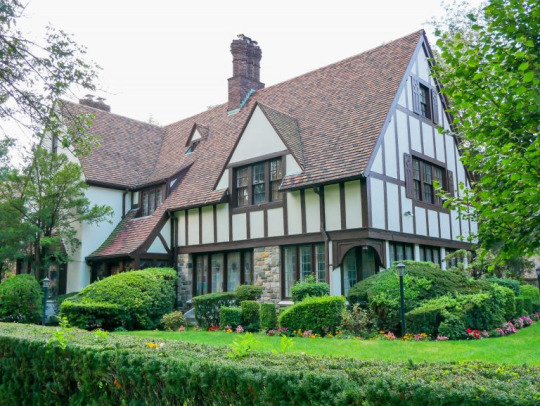
This lovely NYC neighborhood was modeled after an English village back when it was first built in 1910, offering a little piece of the UK in Queens, with quaint Tudor-style houses and a town center with a train station. Read more about it here.
Where: 71st Ave, Forest Hills, NY
The Met Cloisters, Washington Heights
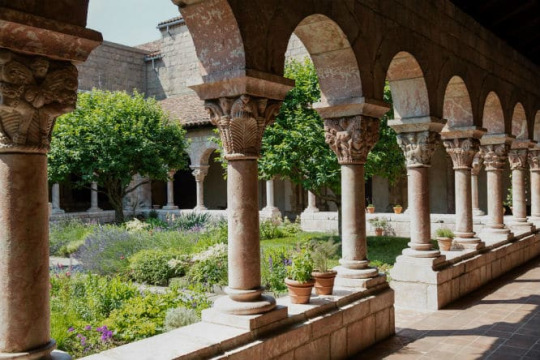
If you didn’t know about The Cloisters before, you might not ever believe that a medieval castle was in the middle of New York City. But it is! The Cloisters is a branch of The Metropolitan Museum of Art that is devoted to European art history. It was designed and constructed taking elements from many different medieval cloisters, which are covered pathways in a church or monastery that connect to form an open square in the center. Find out more here.
Where: 99 Margaret Corbin Drive
Hours: Thursday-Tuesday 10 a.m. – 5 p.m., Closed Wednesdays
Purchase tickets on their website here.
Villa Charlotte Bronte, The Bronx
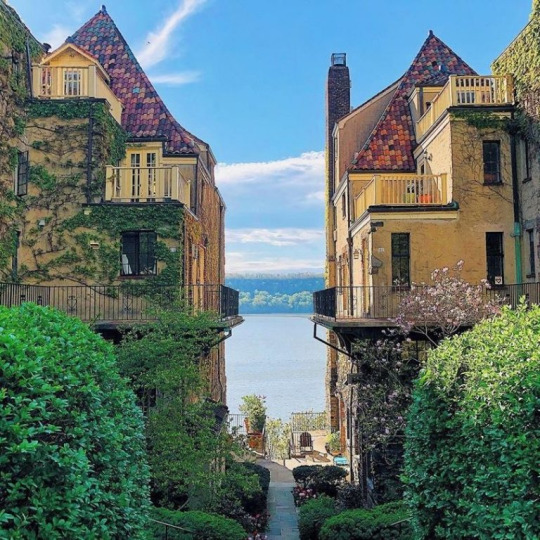
Italy or the Bronx? The beautiful “Villa Charlotte Bronte” apartments look straight out of Europe. They were built in 1926 and sit along the Palisades, overlooking the Hudson River, in the Spuyten Duyvil neighborhood of The Bronx. The design was actually based on an Italian villa, which definitely makes sense, and includes balconies as well as lush gardens!
Where: 2501 Palisade Ave, The Bronx
Fort Tryon Park, Inwood
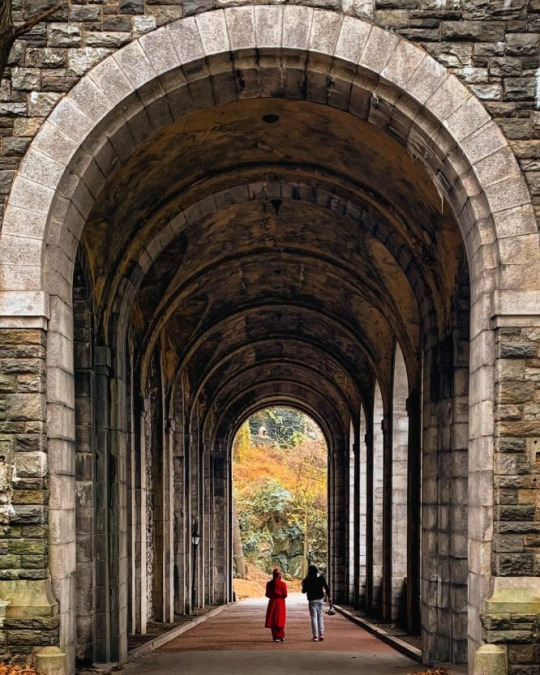
These massive stone arches looks straight out of another era…and that’s because they are! Built between 1901 and 1905, the “Billings Arcade” is some of the last remains of the Tryon Hall mansion, built by wealthy Chicago industrialist Cornelius K. G. Billings. John D. Rockefeller, Jr. purchased the $2 million estate in 1917, only for it to burn down a few years later. Read more about the history from the Fort Tryon Park Trust.
Makes sense that #2 on our list is right next door!
Where: Riverside Dr. To Broadway (arches are near down toward the Billings Lawn, this website has good detailed directions)
Hours: Open daily, 6 a.m. – 1 a.m.
Greenacre Park, Midtown

This hidden little park in Midtown East is only 1/7 of an acre, but it definitely packs a punch. It holds a 25-foot waterfall that is not only a sight for sore eyes in the middle of Manhattan, and will also distract from the noise of the busy streets. It was built in 1971 by the Greenacre Foundation from a design by Hideo Sasaki.
Where: 217 E 51st St.
Hours: Open daily, 8 a.m. – 6 p.m. *Reopens for the season Monday, April 3*
Bonus: Here’s our list of other stunning secret gardens hidden in NYC
Andrew Carnegie Mansion, Upper East Side
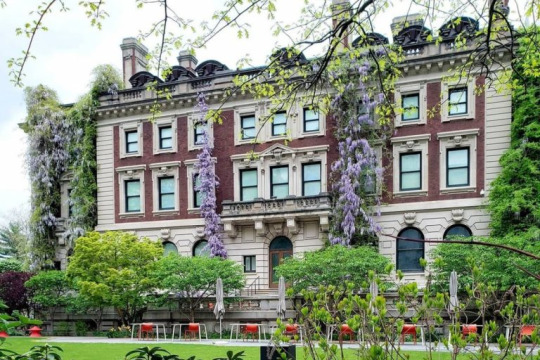
The Andrew Carnegie Mansion is a historical spot now home to the Cooper Hewitt Smithsonian Design Museum. The mansion was originally completed in 1902 and reached landmark status in 1974, though it has undergone much change over the years. The grounds of the mansion, and now museum, feature an expansive garden and cafe for visitors to enjoy as well as a little opulent oasis in the middle of Manhattan.
Where: 2 E. 91st Street
Hours: Thursday–Monday, 9 a.m. – 5 p.m.
Morgan Library, Murray Hill

The Morgan Library feels like a trip to a library from Harry Potter or old world Europe. The historical venue was built as a private library between 1902 and 1906 for financier Pierpont Morgan. He began collecting manuscripts and other historical materials as early as 1890, and now they line the walls of the museum. You can find some of the country’s rarest music manuscripts, early children’s books, Americana, early printed books and more there. Purchase tickets here.
Where: 225 Madison Ave
Hours: Varies, see website for more info
“Little Paris,” Nolita/SoHo
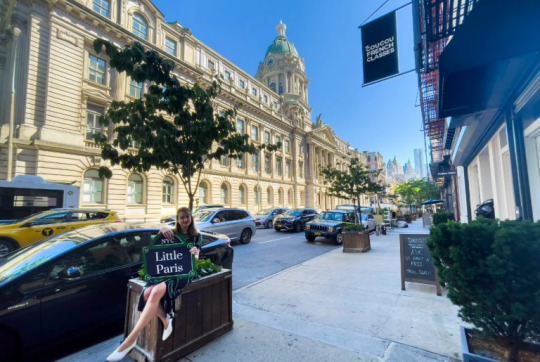
NYC’s own “Little Paris” is the work of one group of French business owners determined to showcase NYC’s own enclave of French culture on Centre Street in Nolita/SoHo (between Broome & Grand St.). Along Centre St. you can find French café and bakery Maman, wine bar La Compagnie des Vins Surnaturels, and art and home decor shop Clic. To complete the Parisian vibe is the old police headquarters located across the street from Coucou French Classes, whose architecture was inspired by Paris’s famous Hotel de Ville (City Hall) with its Beaux Arts style. Read more about it here.
Where: Centre Street between Broome & Grand St.https://www.tiktok.com/embed/v2/7107213381651795246
Van Cortlandt House, The Bronx
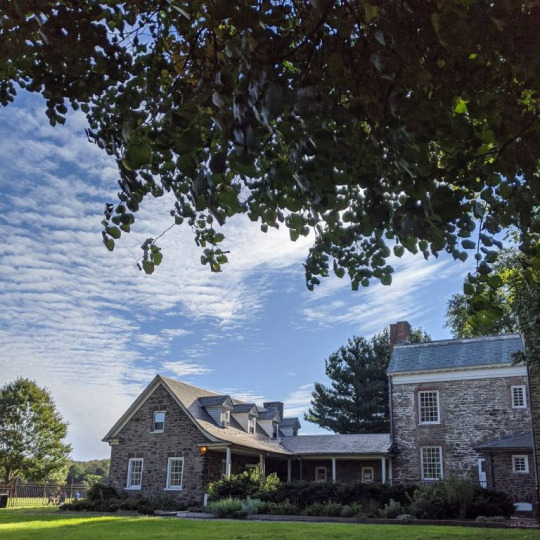
The Van Cortlandt House is the oldest surviving building in The Bronx, and was built by Frederick Van Cortlandt (1699 – 1749) in 1748. The Van Cortlandts were a prominent merchant family who owned a plantation on the property. Generations of the family lived there for 140 years, and in 1887 it was sold to the City of New York and made into public park land (Van Cortlandt Park itself it also the third largest park in NYC and has lots of unique hiking trails and vantage points!). Before it was a museum it had many random, unique uses like a temporary police precinct and a living space for ranch hands that cared for a herd of buffalo on the property.
Where: 6036 Broadway, Van Cortlandt Park
Hours: Varies, see website for more info
Stone Street, Financial District
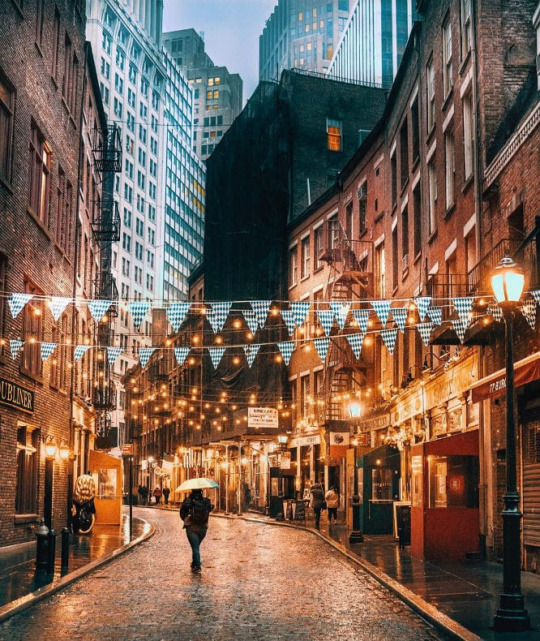
Stone Street is one of the rare cobblestone streets in NYC, that gives more of an old school European feel to the starkly modern city buildings around it. According to Untapped Cities, the street was one of the first to be paved with cobblestones (in 1658) in the Nieuw Amsterdam colony, which is where it got its name. Today, no cars are allowed through and in the warm weather because of outdoor seating, it’s one of the few NYC locations where drinking is actually allowed in the streets.
Where: From Whitehall St. to Broad St., between Marketfield St. and Bridge St.
Hours: Open 24 hours
Ford Foundation Garden, Midtown
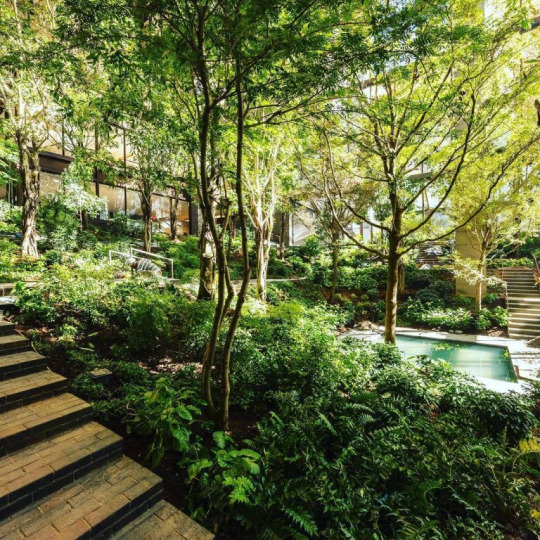
Tucked all the way at the end of 42nd Street (between 2nd Ave. and the United Nations Plaza), the Ford Foundation Center for Social Justice is a true hidden treasure of New York City. With sunlight streaming in on multiple sides, the 160-foot tall atrium holds 39 species of plants. There is also a reflecting pool, and a sensory garden with plant life you are encouraged to touch and smell. Read more here.
Where: 320 E. 43rd St.
Hours: Monday-Friday 8 a.m. – 6 p.m.https://www.instagram.com/reel/ChcXIbcAbpA/embed/?cr=1&v=14&wp=540&rd=https%3A%2F%2Fsecretnyc.co&rp=%2Fextraordinary-places-you-wont-believe-are-in-new-york-city%2F#%7B%22ci%22%3A0%2C%22os%22%3A4699.899999999907%2C%22ls%22%3A3474.899999999907%2C%22le%22%3A3748.600000000093%7D
Jamaica Bay Wildlife Refuge, Queens
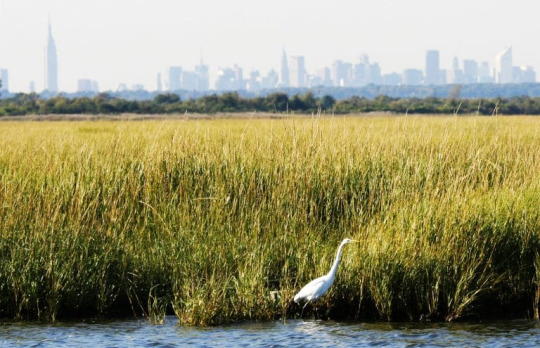
If you’re looking to be surrounded by nature instead of the concrete jungle, the Jamaica Bay Wildlife Refuge is the place for you. On over 9,155 serene acres you can hike, go bird-watching, explore turtle nesting and admire the wide variety of wildflowers, moths and butterflies.
Where: Cross Bay Blvd near Broad Channel, Queens
Hours: Open daily, 6a.m. – 9p.m.
Brooklyn Botanic Garden, Prospect Heights

This lush oasis in the heart of Brooklyn will make you feel like you’ve been completely transported to another city. During the cherry blossom bloom in the spring, it will surely feel like a trip to Japan, but year-round it provides a natural haven for New Yorkers with varying blooms all over its very walkable grounds. Purchase tickets on their website here.
Where: 455 Flatbush Avenue, Brooklyn, NY 11225
Hours: Varies, see website for more info
But of course, Check out Central Park and the other parks, and I definitely don't just mean the parts where everyone goes!
8 notes
·
View notes
Text






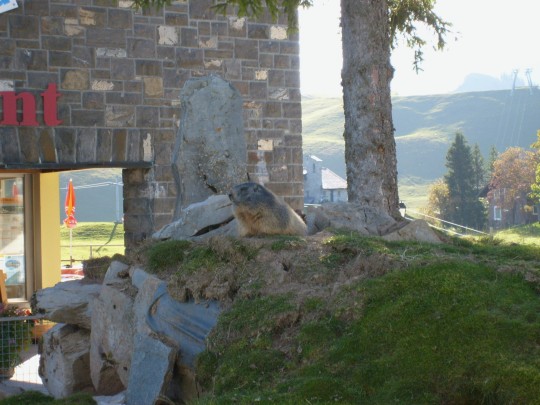








Marmot Day
These playful critters with their bushy tails and chubby cheeks are nature's little comedians. Get ready for a giggle-filled encounter with these adorable mountain entertainers!
Marmot Day is a celebration of marmots, a group of large squirrel-like animals that includes groundhogs, woodchucks and ground squirrels. Even though marmots are found all over the world, from Canada to Mexico and from Russia to India, these animals don’t seem to get the attention they deserve.
This day was established to raise awareness and bring them the attention they so deserve!
History of Marmot Day
Marmot Day can trace its beginnings back to the 1990s when it was proposed as a bill in the Alaska State Senate. Because marmots are creatures that are particularly prolific in the state of Alaska, the idea was to draw attention to this animal as it represents some of Alaska’s folk values. Sponsored by state legislator Curtis Menard, the bill took some time to be passed, but was eventually signed into law by Governor Sarah Palin.
Since its passing by legislature, Marmot Day is an official holiday in the state of Alaska. Festivities tend to take many different forms, typically involving a family dinner or gathering of some sort where marmot jokes and anecdotes are shared!
A related day, but celebrated in the summer instead, is the annual event of Marmot Day that has taken place in Owosso, Michigan since 2002. In this case, the day acts as a community festival and invites participants to celebrate with many fun family activities and even a marmot video contest!
How to Celebrate Marmot Day
Show some love to these funny, furry little animals by celebrating Marmot Day in a variety of ways, with ideas like these:
Visit a Marmot Day Festival
Perhaps it would be fun to take Marmot Day as an inspiration to visit the northernmost of the United States – Alaska! Of course, February may not be the warmest of times to visit, but getting some first hand experience with the marmot might just be worth it.
Or, for those who are a bit more inclined to stay in the lower 48, make plans to head on over to the Marmot Day festival that takes place in Michigan on July 25. The day’s activities include a variety of fun-making events for the whole family, with a nod to this furry little creature in most everything they do!
Go Marmot Watching
Want to celebrate Marmot Day, but can’t make it to Alaska or Michigan? No problem. Those who live near marmot habitats, can make a special trip to go marmot watching, but be sure to plan it at the right time. Since around 80% of a marmot’s life is spent underground, they can be a little hard to spot – especially during the winter months.
It seems one of the best places in the US where marmots tend to be easiest to find are in Washington State, near Mt. Rainier National Park or Hurricane Ridge of Olympic National Park. Yosemite National Park and Sequoia National Park in California are also places to look for marmots, although here they tend to act as pests!
Learn More About Marmots
While those who live in areas inhabited by marmots might know all about them, folks from other parts of the country might just be learning about this unique creature. Spend some time in honor of Marmot Day getting more educated about these interesting little guys.
Check out and share some of these fun facts in honor of the day:
Marmots make high-pitched whistling sounds when they are feeling threatened. In fact, in Quebec, they are known as the “siffleux” which means “whistlers”.
Marmots are technically large ground squirrels with 15 different species living in Asia, Europe and North America.
Marmots are herbivores who prefer a diet of plants, grass, seeds and small shrubs.
Marmots tend to be active from March to September and then hibernate the rest of the year, which means approximately 60% of their life is spent hibernating!
Source
Groundhog Day
Every year on February 2nd, an adorable groundhog emerges from its burrow to predict the weather. Will he see his shadow?
It’s that time again! That’s right, it’s time to gaze towards the state of Pennsylvania and watch a little groundhog scurry out of its den. Because he’s being released to let the masses know when to expect a break in winter weather and how soon they will see the spring breezes flow.
A groundhog? Predicting the weather? That’s right!
Oh come on now, stop laughing. It’s tradition. It’s fun and who doesn’t feel the need for a little fun this far into winter? Come on. It’s time to read a little bit and learn something interesting about this enduring custom. Who knows? By the end of this chat, it’s likely that many more people will be anxiously counting down the days until the next Groundhog Day!
History of Groundhog Day
After getting its official start in 1887 in the United States of America, Groundhog Day has grown in size and scope from its rather humble beginnings. Even before it was official, though, there is record of this day being observed in the US as early as 1840 as recorded in a private diary. 1866 was the first time it was recorded in a newspaper.
The custom started out as a superstition among the Pennsylvania Dutch people, a group of German speaking immigrants who settled in the state in the 1700s and 1800s after fleeing religious persecution in Europe. The stories about the rodent weather predictions may have begun with German ideas regarding a badger
After the United States made the day an official holiday, Clymer H. Freas was the editor of the Punxsutawney Spirit, a local newspaper in Punxsutawney Pennsylvania. He began to herald the town’s groundhog as the official “Groundhog Day Meteorologist”. The branding certainly worked because when most people hear about this day now, who pops to mind? That’s right! It’s Punxsutawney Phil!
What many people don’t know is that there are countless other groundhogs who take this duty of predicting the weather just as seriously as Phil. People who live in the local area can probably share loads of stories about the little weather predicting rodents.
But how accurate are these furry weather people? Well, there is some debate over that but, for dear old Phil, the professionals say that he is correct about 39% of the time. Sadly, that means he isn’t correct even 50% of the time so the odds are probably more in favor of flipping a coin than with Phil. But still, it’s a fun tradition.
Now it’s time to think about ways to enjoy the celebrations surrounding Groundhog Day!
How to Celebrate Groundhog Day
Enjoying the observance of Groundhog Day can be loads of fun. It’s a great excuse to be creative toward the end of the winter months. Try out some of these ideas to get involved:
Know the FAQs about Groundhog Day
To celebrate the day, the first order of business is to get to know its finer points. Here are some FAQs to help in getting to know more about Groundhog Day:
What exactly does Phil do and why is it important?Phil, the groundhog, doesn’t really have a big job. He simply comes out of his den and the sun does the rest.
What does it mean if he sees his shadow? And why does this mean anything? Well if he sees his shadow or not predicts the breaking of winter and the start of spring. According to custom, if the groundhog casts a shadow meaning that it must be a sunny day) then everyone is in for another six weeks of winter weather.
What if Phil doesn’t see his shadow? If Phil comes out and it is cloudy and the sun casts no shadow, then spring-like weather should be on its way. So, perhaps for some people, the trick is to wish for poor weather on Groundhog Day!
View Punxsutawney Phil on Television
To truly celebrate, set the alarm and wake up early, gather the children, make a hearty breakfast and settle in to watch the groundhog emerge from his little nest. Today, most morning news shows will carry the process live and with much pomp and circumstance. The program usually begins around 6:30 in the morning in Pennsylvania, which is Eastern Standard Time (EST), but many TV programs will show recorded snippets of the event throughout the day.
Watch Groundhog Day
This unique 1993 movie starring Bill Murray and Andie MacDowell is a romantic fantasy comedy that has gained a bit of a cult following over the years. It’s the perfect way to enjoy celebrating this day.
Join the Punxsutawney Groundhog Club
The biggest fans of Groundhog Day might like to become a part of the official club. Formed in 1899, the Punxsutawney Groundhog Club has been encouraging groundhog enthusiasts for over a century. Just hop on the Punxsutawney Groundhog Club website for more information on how to join.
Adults can join the club for a small annual fee to get access to a quarterly e-newsletter, a membership card signed by Punxsutawney Phil himself, and advanced notice of the events scheduled to happen in Punxsutawney in celebration of the next Groundhog Day.
Kids can join the Jr. Groundhog Club to receive a newsletter, certificate and membership card. An even more special club is the Phil’s Birthday Club, available only to those whose birthdays fall on February 2!
Make Plans for the Next Six Weeks
Once you know the result of whether or not Phil saw his shadow, it’s time to joyously make plans. This might include more skiing and snowmen or getting ready to look for those early blooming daffodils and roosting robins!
How do you think it will turn out this year? Are you ready for the change of season? When Phil pokes his little nose out of his den and lets everyone know what to expect, join in with everyone else with a hearty cheer!
Happy Groundhog Day!
Source
#Rock Hyrax#Marmot Day#Groundhog Day#GroundhogDay#MarmotDay#Murmeltier#flora#fauna#Klewenalp#Schweiz#Switzerland#Bronx Zoo#travel#summer 2019#original photography#New York City#hiking#USA#2 February#mountain#nature#grass#tourist attraction#landmark#Alpine marmot#vacation#close enough#Murmeli#Mungge
2 notes
·
View notes
Text





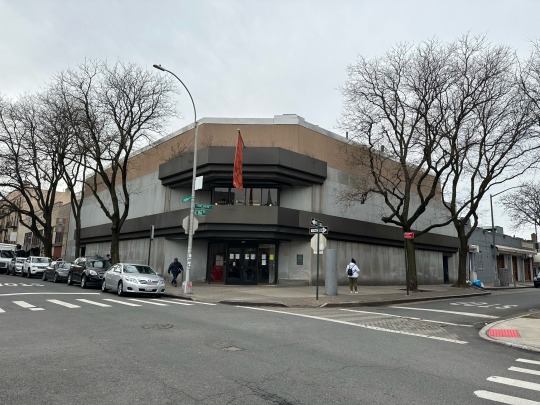



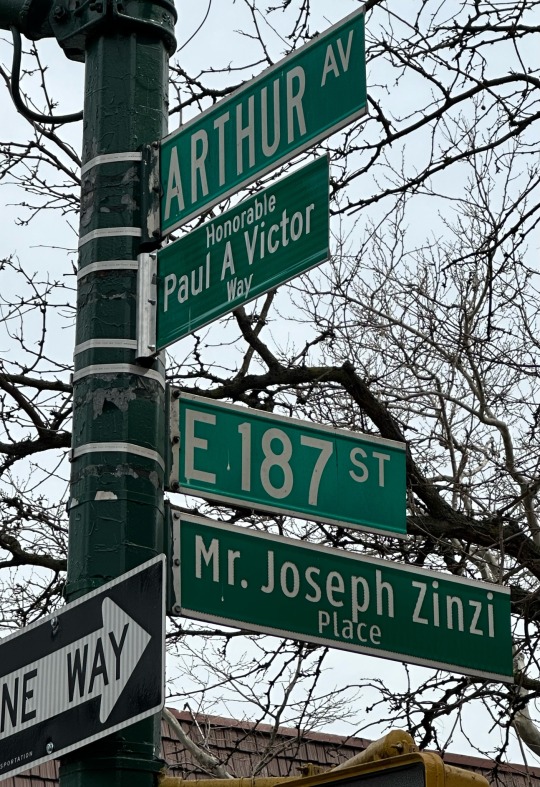
Exploring NYC : The Arthur Avenue / Belmont Neighborhood (AKA “Little Italy in the Bronx”), March 2023.
Part 1: History, Landmarks, Architecture, Plus Other Cool and Curious Stuff!
6 notes
·
View notes
Text



New York Citys Instrumental Role In The Birth Of Hip-Hop Music And Fashion
The state of the Big Apple back in the '70s gave rise to hip-hop. The conditions of New York City during the 1970s were pretty negative, especially for people of color-discrimination, unemployment, urban redlining-but young people took those circumstances and the unique cultural mix of the city and created something that spoke to their lifestyles.
Photography from the likes of Jamel Shabazz (photos above) captures those times.
New York is the American fashion capital, and Black and Brown communities in New York had, and have, a specific attention to their style-all these factors led to New York as the birthplace of hip hop and hip hop style.
In every borough, hip-hop fans can visit landmarks and neighborhoods where trademark styles came to fruition.
Where exactly did hip-hop artists find the purveyors of hip-hop style if they wanted to reflect the street style?
Brooklyn in Albee Square Mall off of Dekalb Avenue.
Harlem had The Mart 125th, and tailored shops like AJ Lesters, Leighton's, Orrie's, and of course, custom tailor Dapper Dan.
For outerwear purchases, many people were drawn to Delancey Street in downtown Manhattan known for haggling with shopkeepers for the best price.
Bronx, everyone shopped atFrank's Sporting Goods on Tremont Avenue for sneakers.
The Deuce on 42nd Street became a cultural epicenter where you saw x-rated movie theaters, low-level drug dealers, chain snatchers, and got your picture taken with a spray-painted backdrop.
But bringing it back to the music, the song when hip hop and fashion come together, was Slick Rick and Doug E. Fresh of the Get Fresh Crew's "La Di Da Di.”
DNA America
“it’s what we know, not what you want us to believe.”
#dna #dnaamerica #news #politics
2 notes
·
View notes
Text
Which Bronx landmarks hold the most history? Bronx personal injury attorneys showcase the borough’s most iconic sites and their legacy.
0 notes
Text
Events 1.11 (after 1940)
1942 – World War II: Japanese forces capture Kuala Lumpur, the capital of the Federated Malay States. 1942 – World War II: Japanese forces attack Tarakan in Borneo, Netherlands Indies (Battle of Tarakan) 1943 – The Republic of China agrees to the Sino-British New Equal Treaty and the Sino-American New Equal Treaty. 1943 – Italian-American anarchist Carlo Tresca is assassinated in New York City. 1946 – Enver Hoxha, Secretary General of the Communist Party of Albania, declares the People's Republic of Albania with himself as head of state. 1949 – The first "networked" television broadcasts took place as KDKA-TV in Pittsburgh, Pennsylvania goes on the air connecting the east coast and mid-west programming. 1957 – The African Convention is founded in Dakar, Senegal. 1959 – 36 people are killed when Lufthansa Flight 502 crashes on approach to Rio de Janeiro/Galeão International Airport in Brazil. 1961 – Throgs Neck Bridge over the East River, linking New York City's boroughs of The Bronx and Queens, opens to road traffic. 1962 – Cold War: While tied to its pier in Polyarny, the Soviet submarine B-37 is destroyed when fire breaks out in its torpedo compartment. 1962 – An avalanche on Huascarán in Peru causes around 4,000 deaths. 1964 – Surgeon General of the United States Dr. Luther Terry, M.D., publishes the landmark report Smoking and Health: Report of the Advisory Committee to the Surgeon General of the Public Health Service saying that smoking may be hazardous to health, sparking national and worldwide anti-smoking efforts. 1966 – The Tbilisi Metro is opened. 1972 – East Pakistan renames itself Bangladesh. 1973 – Major League Baseball owners vote in approval of the American League adopting the designated hitter position. 1983 – United Airlines Flight 2885 crashes after takeoff from Detroit Metropolitan Airport, killing three. 1986 – The Gateway Bridge, Brisbane, Queensland, Australia is officially opened. 1994 – The Irish Government announces the end of a 15-year broadcasting ban on the IRA and its political arm Sinn Féin. 1995 – 51 people are killed in a plane crash in María La Baja, Colombia. 1996 – Space Shuttle program: STS-72 launches from the Kennedy Space Center marking the start of the 74th Space Shuttle mission and the 10th flight of Endeavour. 1998 – Over 100 people are killed in the Sidi-Hamed massacre in Algeria. 2003 – Illinois Governor George Ryan commutes the death sentences of 167 prisoners on Illinois's death row based on the Jon Burge scandal. 2013 – One French soldier and 17 militants are killed in a failed attempt to free a French hostage in Bulo Marer, Somalia. 2020 – COVID-19 pandemic in Hubei: Municipal health officials in Wuhan announce the first recorded death from COVID-19.
0 notes
Text
The Complete Guide to Hotels in the Bronx Near Yankee Stadium
The Bronx, one of New York City's most vibrant boroughs, is home to a rich history, diverse culture, and countless attractions. Among its most famous landmarks is Yankee Stadium, the iconic home of the New York Yankees, which draws millions of visitors each year. Whether you're in town to catch a baseball game, explore the Bronx Zoo, or immerse yourself in the borough's unique culture, finding the right accommodations is key to a memorable visit.

If you're planning to attend a game or event at Yankee Stadium, you'll want to stay at a hotel that offers both convenience and comfort. Fortunately, there are several excellent Hotels in the Bronx Near Yankee Stadium that make it easy for visitors to enjoy their stay while having quick access to this world-renowned venue.
In this blog, we’ll explore the best Hotels in Bronx, with a particular focus on those near Yankee Stadium. We'll also provide an overview of the surrounding attractions, amenities, and services that these hotels offer, making your stay in the Bronx a breeze.
Why Stay Near Yankee Stadium?
Yankee Stadium is a major draw for tourists visiting the Bronx, and staying nearby offers a variety of benefits. Here’s why choosing Hotels in the Bronx Near Yankee Stadium is a great option:
1. Easy Access to Major Attractions
Staying near Yankee Stadium means you’re close to other must-visit destinations in the Bronx, such as the Bronx Zoo, the New York Botanical Garden, and the historic Edgar Allan Poe Cottage. You’ll have easy access to these landmarks without the hassle of long commutes.
2. Immersive Experience
The area around Yankee Stadium offers a unique urban experience. With vibrant neighborhoods, local eateries, and cultural hotspots, you can experience the true essence of the Bronx during your stay.
3. Convenience for Baseball Fans
If you're a New York Yankees fan, there’s no better place to stay than near the stadium. Whether you’re attending a game or a concert, being within walking distance of the stadium allows you to avoid traffic and long commutes, making your trip to the game much more enjoyable.
4. Public Transport Connectivity
Hotels in the Bronx are well-connected to New York City’s public transportation network. Many hotels near Yankee Stadium are located close to subway stations, making it easy to travel to Manhattan or other boroughs for sightseeing, shopping, and dining.
Best Hotels in the Bronx Near Yankee Stadium
If you're looking for a comfortable and convenient place to stay near Yankee Stadium, there are several excellent options. Here are some of the best Hotels in the Bronx Near Yankee Stadium:
1. Ramada by Wyndham Bronx
One of the most well-regarded Hotels in Bronx, the Ramada by Wyndham Bronx offers an ideal location for visitors attending events at Yankee Stadium. This hotel combines modern amenities with a friendly, welcoming atmosphere. It’s located just a short distance from the stadium, making it an excellent choice for baseball fans and tourists alike.
Comfort and Convenience: Modern Amenities at Your Fingertips
The Ramada by Wyndham Bronx is designed to meet the needs of modern travelers, offering a combination of comfort and convenience. Here are some of the amenities that make it stand out:
Free Wi-Fi: Stay connected throughout your stay with complimentary high-speed internet access in all guest rooms and public areas. Whether you’re checking emails or planning your next adventure, staying connected is easy.
Free Breakfast: Start your day right with a free continental breakfast offered by the hotel. With a variety of options, including fresh pastries, coffee, and fruit, guests can fuel up before heading out to explore the Bronx or catch a game at Yankee Stadium..
Spacious Rooms: The rooms at the Ramada Bronx are designed to provide guests with a comfortable and relaxing environment. Featuring modern furnishings, comfortable beds, and plenty of space, each room is an oasis of calm after a day of sightseeing or attending an event. Guests can also enjoy amenities like flat-screen TVs, coffee makers, and mini-fridges.
Business Services: For business travelers, the hotel offers a variety of business services, including fax and photocopying. Whether you're in the area for work or attending a conference, the Ramada Bronx provides everything you need to stay productive.
Attractions Near Hotels in the Bronx
One of the key selling points of the Ramada by Wyndham Bronx is its location. Situated in the heart of the Bronx, the hotel is just minutes away from Yankee Stadium, making it a perfect spot for baseball fans heading to a game or concert. Additionally, it’s close to several other major attractions, including the Bronx Zoo, New York Botanical Garden, and Arthur Avenue, also known as the Bronx’s Little Italy.
Conclusion: The Perfect Stay Awaits
When it comes to finding great Hotels in Bronx, particularly near Yankee Stadium, the Ramada Bronx stands out as one of the best choices for visitors. With its convenient location, modern amenities, and welcoming atmosphere, it ensures that guests enjoy a comfortable stay with easy access to all the major attractions the borough has to offer.
Whether you're in town for a game, an event, or simply to explore the Bronx, staying in a hotel near Yankee Stadium means you're at the heart of the action. From family-friendly accommodations to luxurious options, there are plenty of choices to suit every traveler's needs. So, next time you're planning a visit to New York City, consider booking your stay at one of the Hotels in Bronx and experience all that this dynamic borough has to offer.
0 notes